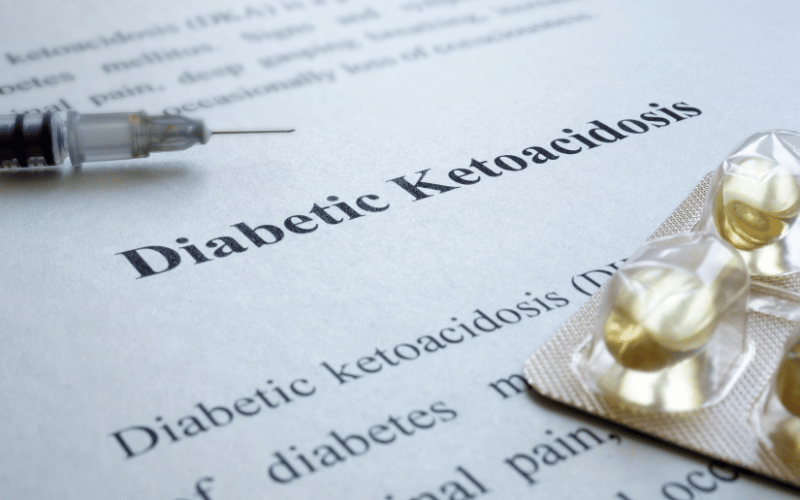Introduction: Navigating Through Diabetic Ketoacidosis
Diabetic ketoacidosis (DKA) stands as a significant medical concern, particularly for individuals managing diabetes. This condition, characterized by a dangerous build-up of ketones in the body, demands an in-depth understanding due to its complexity and potential severity. The key to managing DKA lies in recognizing its symptoms early and understanding its triggers, which can often be subtle yet alarming.

The journey towards understanding DKA begins with its onset. It’s primarily seen in individuals with type 1 diabetes, but it can also affect those with type 2 diabetes under certain conditions. The onset is often rapid, sometimes developing within 24 hours, making awareness critical. Central to the development of DKA is the relationship between insulin and glucose in the body. Insulin, a hormone produced by the pancreas, plays a pivotal role in regulating blood glucose levels. In diabetes, the inability of the body to produce or effectively use insulin leads to elevated glucose levels, setting the stage for DKA.
Various factors can trigger DKA. These include missed insulin treatments, infections, significant stress, and other illnesses. In some cases, undiagnosed diabetes can also lead to DKA, making it the first sign that someone has the condition. Recognizing these triggers is a vital step in prevention. Awareness and education about DKA are paramount, especially for those living with diabetes. Understanding the condition not only helps in recognizing the symptoms early but also empowers individuals to manage their health proactively. This includes regular monitoring of blood sugar levels, adherence to diabetes management plans, and knowing when to seek medical attention.
Healthcare providers play a crucial role in educating patients about DKA. Regular check-ups, personalized advice, and diabetes education sessions are instrumental in equipping patients with the knowledge and tools needed to manage their condition effectively. The introduction to diabetic ketoacidosis sets the stage for a deeper exploration into its symptoms, treatment, and management strategies. Understanding these elements is crucial for anyone affected by diabetes, as it not only helps in managing the condition but also in preventing complications like DKA.
Symptom 1: Excessive Thirst

Excessive thirst, medically known as polydipsia, is a common symptom of diabetic ketoacidosis (DKA). It’s a direct consequence of high blood sugar levels, which create an osmotic effect, pulling fluids from the body’s tissues into the bloodstream. This process leads to dehydration, triggering the body’s natural response to replenish lost fluids through increased thirst.
The intensity of thirst experienced can be overwhelming and disruptive to daily activities. Individuals with DKA often find themselves drinking much more than usual, yet the thirst remains unquenched. This persistent need for fluids can interfere with sleep, work, and other regular activities, as the urge to drink water becomes a constant concern.
Excessive thirst in DKA is closely linked with frequent urination, another key symptom. As the body attempts to flush out excess glucose through urine, it leads to a loss of more fluids, exacerbating the cycle of dehydration and thirst. This interplay of symptoms highlights the body’s struggle to maintain a balance in glucose and hydration levels.
If left unchecked, the dehydration caused by excessive thirst can lead to more severe health complications. It’s not just a matter of discomfort; it’s a warning signal from the body that the balance of fluids and electrolytes is severely disturbed, requiring prompt medical attention.
Addressing excessive thirst involves more than just increasing fluid intake. It’s crucial to seek medical attention to address the underlying cause – in this case, the high blood sugar levels and ketone production indicative of DKA. Proper management of the underlying diabetes is essential to prevent the recurrence of this symptom. (1)